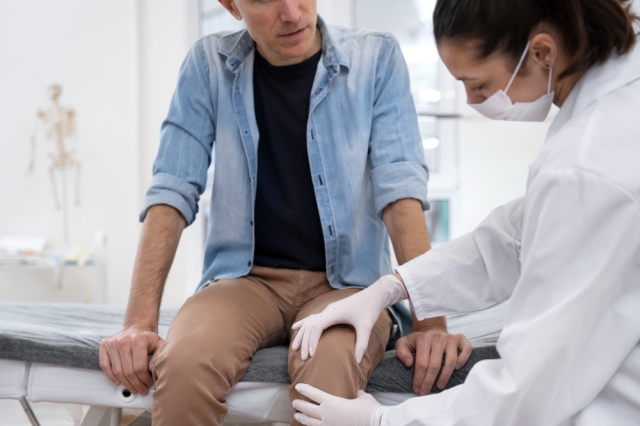Joint pain is one of the most common health complaints worldwide. Whether it’s a stiff knee after years of running, a shoulder that aches every time you reach overhead, or a hip that slows you down when climbing stairs, these issues affect millions of people. For many, painkillers and physiotherapy offer some relief, but when symptoms persist, joint injections can be an effective option.
In this article, we’ll break down what joint injections are, the conditions they can help with, what the process involves, and what people often experience afterward. The goal is to explain things clearly without too much medical jargon, so you can make an informed decision about your own health.
What Are Joint Injections?
A joint injection is a medical procedure where a small amount of medication is delivered directly into or around a joint to relieve pain and inflammation. Because the medicine goes straight to the problem area, injections often provide faster and more targeted relief compared to tablets or creams.
Injections are not new - doctors have used them for decades - but the options available today are more advanced, precise, and tailored to the patient’s needs. Some injections are designed to calm inflammation, others improve lubrication inside the joint, and a few stimulate natural repair processes.
Common Conditions Joint Injections Can Help With
Joint injections are widely used for a variety of conditions, especially where pain and stiffness interfere with daily life. Some of the most common include:
-
Osteoarthritis: The “wear and tear” form of arthritis that commonly affects knees, hips, and shoulders.
-
Frozen Shoulder (Adhesive Capsulitis): Painful stiffness that can last for months or even years if untreated.
-
Tennis Elbow and Golfer’s Elbow: Overuse injuries that cause pain in the elbow and forearm.
-
Plantar Fasciitis: Heel pain caused by inflammation of the thick band of tissue under the foot.
-
Hip Bursitis: Inflammation of the fluid-filled sacs that cushion the hip joint.
-
Sports injuries: Persistent swelling, tendon inflammation, or “nagging” pain that limits performance.
-
Post-surgical or fracture recovery: Injections can sometimes help patients regain mobility when traditional recovery stalls.
Not every case of joint pain requires injections, but for people whose daily lives are limited despite rest, painkillers, or physiotherapy, they can make a big difference.
Types of Joint Injections Explained
There are several different types of injections. Each has its own role, benefits, and duration of effect. Here’s a simple breakdown:
1. Corticosteroid Injections
-
Reduce inflammation quickly.
-
Often used for arthritis, bursitis, and tendon issues.
-
Relief may last weeks to months.
-
Not usually repeated too often in the same joint, but useful for calming a painful flare-up.
2. Hyaluronic Acid (Viscosupplementation)
-
A gel-like substance that helps lubricate the joint.
-
Commonly used for knee osteoarthritis.
-
Can improve mobility and reduce pain for several months.
-
Especially useful when “creaky” joints feel dry and stiff.
3. Platelet-Rich Plasma (PRP)
-
Uses the patient’s own blood, spun in a machine to separate healing platelets.
-
Thought to promote repair of injured tissue and reduce inflammation.
-
Popular with athletes, though results vary and it remains under study.
4. Arthrosamid® and Other Novel Options
-
A long-lasting hydrogel treatment for knee osteoarthritis.
-
Works by cushioning the joint and providing ongoing pain relief.
-
Recent studies suggest benefits may last years, rather than months.
What Happens During the Procedure?
Many people are nervous before their first injection, but the process is usually quick and straightforward:
-
You’ll typically sit or lie down, depending on which joint is being treated.
-
The area will be cleaned, and a local anaesthetic may be used to numb the skin.
-
Using ultrasound guidance, the doctor places the needle precisely where it’s needed.
-
The injection itself usually takes less than a minute.
Most people describe the sensation as mildly uncomfortable rather than painful. Some even say it feels like a quick “pinch.” The precision of ultrasound guidance also gives reassurance that the medicine is delivered to the right spot.
After the Injection: What to Expect
-
Immediate Relief: Sometimes the local anaesthetic gives instant pain relief, but this may wear off in a few hours.
-
Soreness: It’s common to feel a little sore for a day or two.
-
Gradual Improvement: With steroid or hyaluronic acid injections, the real benefits may build over days or weeks.
-
Follow-Up: Many doctors recommend combining injections with physiotherapy or specific exercises to get the best results.
Patients often ask, “How long will it last?” The answer depends on the type of injection and the condition treated. Steroid injections may last a few months, while newer treatments like Arthrosamid can provide longer-term relief.
Benefits of Joint Injections
-
Targeted relief: Medicine goes directly to the source of pain.
-
Quick procedure: Usually done in under 30 minutes, often same-day.
-
Non-surgical: No long recovery time compared to operations.
-
Enables rehab: Reducing pain makes it easier to exercise and rebuild strength.
-
Improved quality of life: Many patients say they can return to hobbies, sports, or simply walking comfortably again.
Limitations and Considerations
It’s important to keep realistic expectations. Joint injections are not a “miracle cure.” They may provide months (or in some cases years) of relief, but the underlying condition — arthritis, tendon wear, or joint degeneration — often remains.
Other points to consider:
-
Some injections can’t be repeated too often.
-
They may not work equally well for everyone.
-
Lifestyle factors like diet, exercise, and weight management still matter.
-
People with allergies, infections, or certain health conditions may not be suitable candidates.
Practical Tips If You’re Considering Injections
-
Ask About Ultrasound Guidance – It increases accuracy and safety.
-
Discuss All Options – From physiotherapy to injections to surgery, know your choices.
-
Plan for Recovery – Light activity is usually fine, but avoid strenuous exercise for a couple of days.
-
Track Your Progress – Keep notes on pain levels and mobility to share with your doctor.
-
Think Long-Term – Injections can give breathing space, but combining them with strength training and lifestyle changes helps sustain benefits.
Patient Experiences
Many people who receive injections describe them as “game-changing.” For example:
-
A runner with knee arthritis may be able to return to training with less pain.
-
Someone with a frozen shoulder might regain movement after months of stiffness.
-
Patients recovering from hip bursitis often find injections help them sleep better without nagging discomfort.
Hearing these real-world outcomes helps put the treatment into perspective: injections aren’t always dramatic overnight fixes, but they often provide enough relief to get life back on track.
Final Thoughts
Joint pain can be frustrating and life-limiting, but it doesn’t always have to lead straight to surgery. For many people, joint injections provide a safe, effective way to reduce pain and regain movement, whether it’s in the knee, shoulder, hip, or elsewhere.
If you’re struggling with persistent pain, it may be worth discussing whether an injection could be right for you. Clinics like The Joint Injection Clinic in London specialise in these treatments and can guide you through your options.






